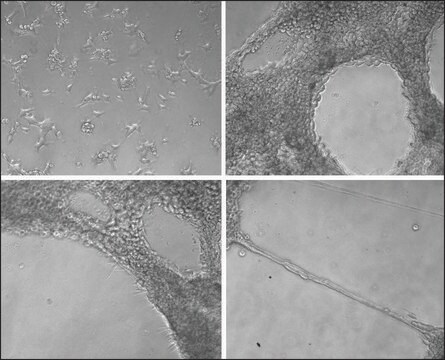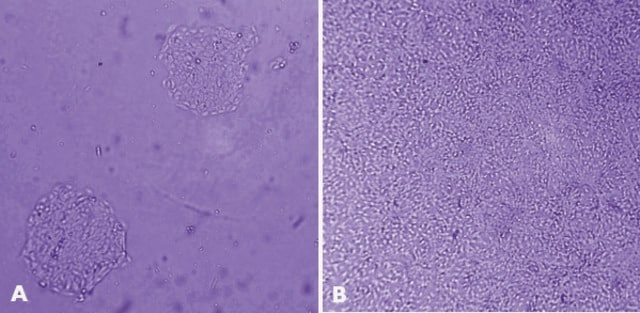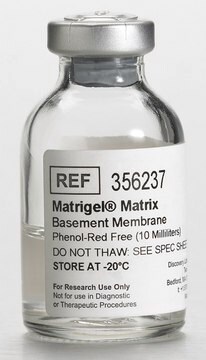E1270
ECM Gel from Engelbreth-Holm-Swarm murine sarcoma
liquid, BioReagent, suitable for cell culture
Synonym(s):
Basement membrane extract (BME), EHS matrix
About This Item
Recommended Products
product line
BioReagent
Quality Level
form
liquid
concentration
8-12 mg/mL
technique(s)
cell culture | mammalian: suitable
shipped in
dry ice
storage temp.
−20°C
Gene Information
mouse ... Lama1(16772) , Lama3(16774) , Lama5(16776) , Lamb1-1(16777) , Lamc1(226519) , Lamc2(16782) , Nid1(18073) , Sdc2(15529)
Related Categories
Application
Biochem/physiol Actions
Every mouse colony used for the production of this product is routinely screened for several pathogens. Tested and found negative for LDEV.
Components
Product contains 50 mg/L Gentamicin Sulfate.
Caution
Preparation Note
Storage Class Code
12 - Non Combustible Liquids
WGK
WGK 3
Flash Point(F)
Not applicable
Flash Point(C)
Not applicable
Certificates of Analysis (COA)
Search for Certificates of Analysis (COA) by entering the products Lot/Batch Number. Lot and Batch Numbers can be found on a product’s label following the words ‘Lot’ or ‘Batch’.
Already Own This Product?
Find documentation for the products that you have recently purchased in the Document Library.
Articles
Cell culture protocols using Sigma ECM Gel Matrix EHS basement membrane extract (BME) for neurite outgrowth, cell invasion and angiogenesis tube formation assays.
Cell based angiogenesis assays to analyze new blood vessel formation for applications of cancer research, tissue regeneration and vascular biology.
Attachment Factors for 3-Dimensional Cell Culture
Highlighting existing and novel fabrication methods for both, solid and hydrogel-based scaffold for tissue engineering applications.
Our team of scientists has experience in all areas of research including Life Science, Material Science, Chemical Synthesis, Chromatography, Analytical and many others.
Contact Technical Service





